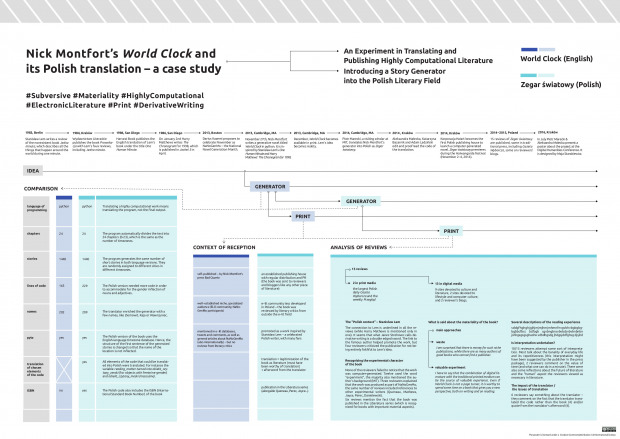Literary Experiments with Automatic Translation: A Case Study of a Creative Experiment Involving King Ubu and Google Translate
The habitus of the translator is in many ways different from that of the author, the translator being sometimes viewed rather as a background figure, and translation having the double status of both an art and a craft requiring specific competence. Thus, it would seem, the consideration of “electronic translation” or experiments involving translation within the digital field would require a specific approach. Alongside the fascinating question of the translation of electronic literature, another subject worth exploring are the relations between automatic translation, or technology-aided translation, and creative literary activity. The question posed in the paper is how such connections can prove fruitful for new ways of thinking about translation and literary activities. The 1994 Encyclopaedia of Mathematics entry on automatic translation informs us that “automatic translation of literature and fiction is both unrealistic and unnecessary.” This seems to be a frequent view, accompanied by a certain anxiety among translation professionals as to the threat of automatic translation “stealing their job” within their lifetime. However, indeed, literary translation is viewed as the last bastion for human translators as an activity “only humans can do”. Such is the context for the study of literary experiments carried out with Google Translate, of which the translation of King Ubu published by the Polish publishing house Korporacja Ha!art is an example. King Ubu by Alfred Jarry, an absurdist play written as a joke by a schoolboy over a century ago, can be seen as one of the pioneering works of absurdist, pataphisical literature. The “failed” products of automatic translation are also often referred to as absurd or gibberish. Thus, this conceptual publication is doubly absurd, with a dadaist translation technique applied to a pataphisical play. The experiment provokes to consider the meaning of creativity. Google Translate produces its propositions based on a corpus of human produced translations. This represents, in a way, the most “conventional” interpretation of the text. The product of the automatic translation can be thus seems as an uncreative, appropriated text, a sum of a number of anonymous verbal exchanges. This also implies that the fragments the machine “can’t deal with” in turn can be seen as the most unusual, creative ones, but also perhaps the ones most difficult in interpretation. The paper includes the review of the creative applications of automatic translation, a description of approaches to such (actual or only hypothetical) practices within the translation profession, and provides a critical analysis of the implications of the experiment. (Source: ELO 2015 Conference Catalog)


